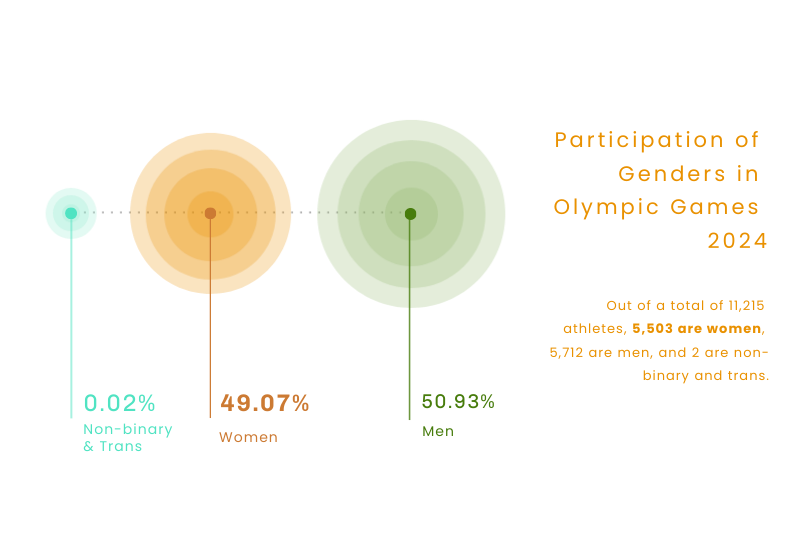No Gender Parity At Paris 2024
Now that the athletes are starting to arrive in Paris, the official numbers are in: the IOC has not reached their goal of having an equal number of women and men competing.

It has never been closer though, and there is reason to be optimistic and celebrate nevertheless. Let’s have a look at these games, how we’ve gotten here and what the future will look like. But first of all, let’s get the numbers out of the way. Out of a total of 11,215 athletes, 5503 are women, 5712 men and 2 are non-binary and trans. This brings women up to 49.1%, not 50, but still the highest percentage ever.
History of female participation in the Olympics
Paris is organising the modern Olympics for the third time. The last time was exactly 100 years ago. But we can’t not mention the 1900 edition. This second edition of the modern olympic games was the first time ever that women were allowed to compete. The Ancient Olympic Games, which were held roughly between 800 BC and 400 AD, had only ever allowed men to compete.
The first women competed in five events: tennis, sailing, croquet, equestrian and golf. Only 22 women took part, meaning a meagre 2.2 per cent of the 997 total competitors. The very first woman, the first to actually compete, and also become an Olympic Champion, was Hélène de Pourtalès from Switzerland. She and her other team members won the first 1 to 2 ton sailing event.
Twenty four years and five editions later, the number of female participants had only doubled to 4.4%. Although it would more than double to 9.6% at the 1928 Amsterdam games, after that progress slowed down significantly.
The factsheet “Women in the Olympic Movement” gives you a comprehensive overview of women’s participation as well as an overview which women’s sports were introduced and when.
The biggest milestones in women’s emancipation specifically for the Olympics, was the historic amendment of the Olympic Charter so that included an explicit reference to advancing women in sport.
“The role of the IOC is to lead the promotion of Olympism in accordance with the Olympic Charter. For that purpose the IOC: (…) strongly encourages, by appropriate means, the promotion of women in sport at all levels and in all structures, particularly in the executive bodies of national and international sports organizations with a view to the strict application of the principle of equality of men and women.”
(Olympic Charter, 1996)

Will we ever see a 50-50 split?
The chances of ever seeing exactly as many men as women compete is practically zero, for a number of different reasons. First of all, since Timothy LeDuc became the first openly nonbinary Olympian at the last winter games in Beijing, it is not only about men and women anymore. Also there are many other practical factors, such as the number of events or athletes that meet the qualifying standard. This year we will see 157 male events and only 152 female (and 20 mixed).
Another important aspect that we should consider, is that a number of countries don’t send any female athletes. Or take Qatar, whose delegation consists of 13 men and only one woman. On the other hand, there is Guam which has one man among 7 women.
The future for women in sport
Although Paris has not delivered on its promise, this Olympics will be the most gender-equal ever held. And women’s sport in general is going through big and fast changes. There is increased attention, fandom and with that comes recognition and not unimportant, financial opportunities. Fair and equal pay, sponsorship deals and equal prize money between the genders are also important factors in making sport fair and accessible for anyone.
However, it is not all fun and games, there are still many serious issues to address and hardships to overcome. Nevertheless the progress that is being made every day and every Olympiade is unlikely to ever be undone.
